Musings
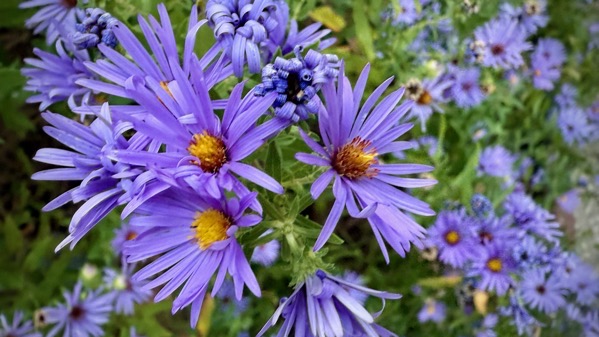
Today, I found an anole indoors. Does this happen every autumn? Something like that. I gently captured it and released it outdoors. Good outcome. [I am mystified as to how they get inside.]
Last week, on our way up to Lake Superior, we were slow-motoring on a sand road through the visual mosaic of leaf color and sun-n-shade when what should appear on the hood just past the wipers but a mouse. It must have come from an open area at the base of the wipers. Up on the hood, it had little traction, and I hit the brakes hard and zip, it flew off the hood forwards, and I saw it run into the ditch to the left. Another good outcome.
Posted at 7:16 PM |
Comments Off on Two critter stories
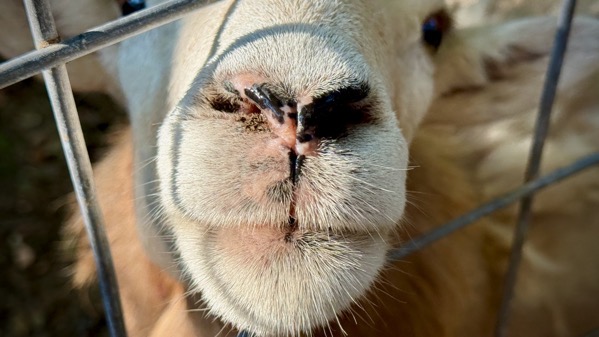
Here’s Sheepie. He smells change a’comin’.
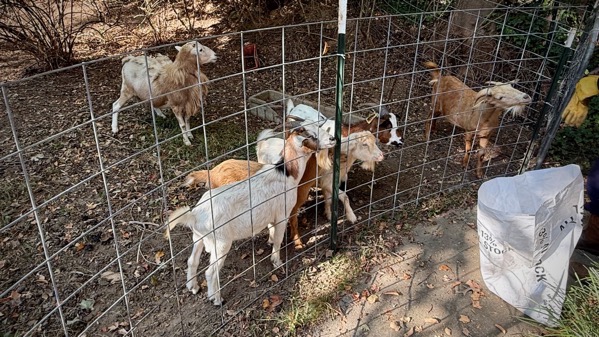
Goat Guy came with a modest (yet sufficient) ration of treats, although the troops gathered just hearing his truck arrive. [The treats are in the white bag.]
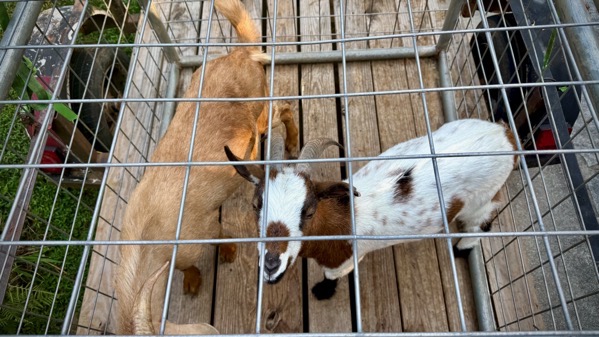
Goat Guy said the first one to take is the most troublesome. This may be applicable in myriad other circumstances. The brown bill on the left was the first; multi was number two. Brown billy butted all the others as they arrived and generally caused mayhem (supporting Goat Guy’s assessment that he was the most troublesome)…
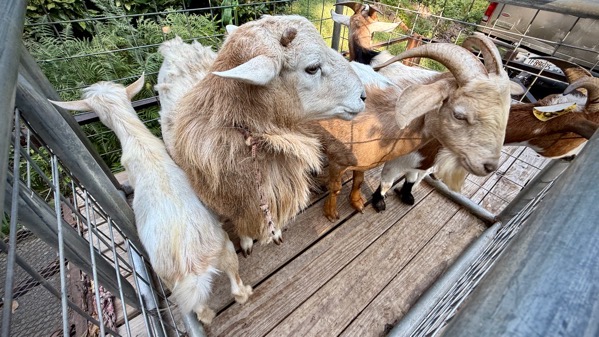
…until Sheepie arrived (last). Now, the fence and the water bucket…et cetera…are all transported to their next appointment, off Memorial Drive, we heard.
Posted at 7:19 PM |
Comments Off on Exodus
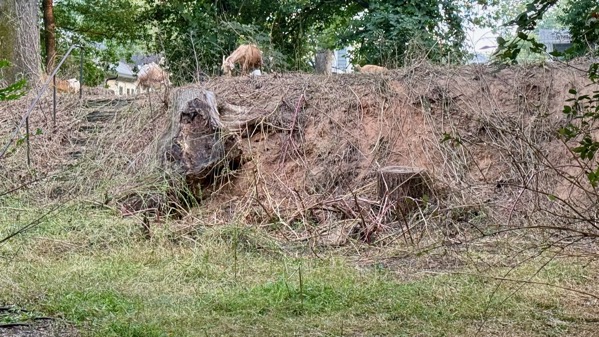
This evening.
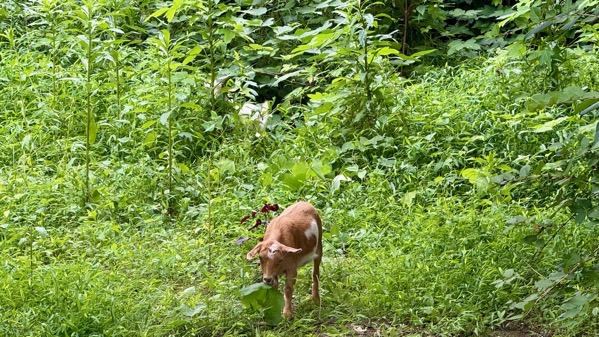
Goat day one (a little closer, but still).
Conclusion: plenty of processing by goat digestive systems.
Posted at 7:20 PM |
Comments Off on Compare, contrast

The goat is chewing; the offset jaw is not some kind of damage. Goats do plenty of chewing.
Posted at 7:56 PM |
Comments Off on Simple activities; repeat
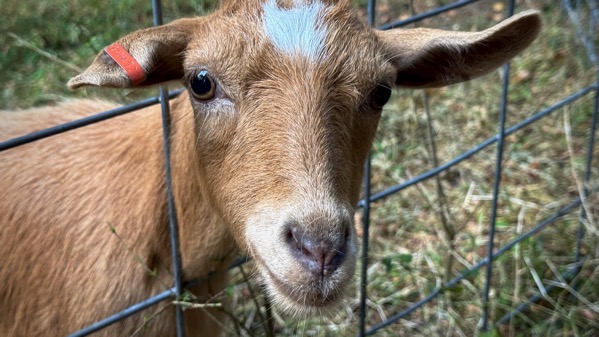
Overwhelmingly, the troops act together, as befits carnivore targets. Of course, no stalking carnivores lurk in the immediate area.
Posted at 7:49 PM |
Comments Off on Herd behavior

Here’s a goat picture, although the story of the day regarding The Troops was that Sheepie got tangled up, and we called the owner to free him, so that became a non-story. I was holding off on posting until the Sheepie story resolution, and plum forgot to tell the story. Now it’s a late-breaking story?
Posted at 10:22 PM |
Comments Off on Troop doin’s

The troops are very aware of us whenever we stand in the back windows, or pass by their fence going in or out.
Note the horizontal pupils….
Posted at 8:54 PM |
Comments Off on Bezoar ibex descendant
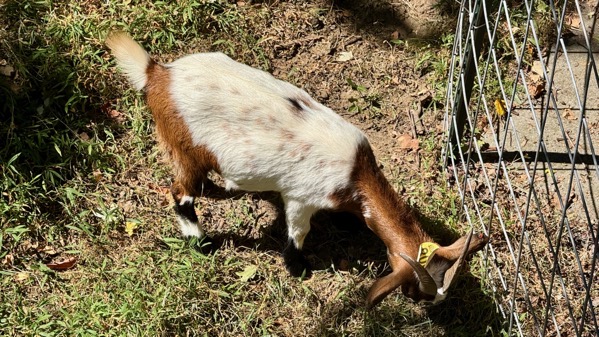
Am I posting a disproportionate number of photos of this goat? Possibly. It isn’t a photogenic issue, it’s posing…and light, also, I suppose.
Posted at 8:05 PM |
Comments Off on Browser in action
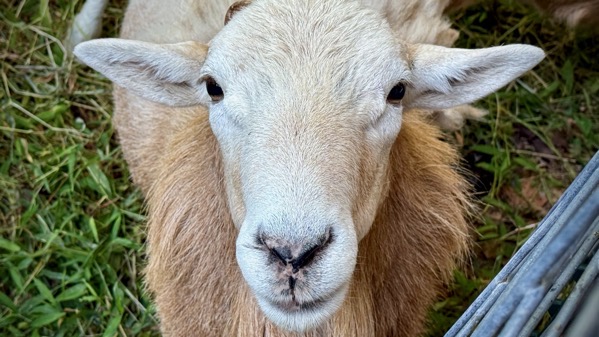
Meet Sheepie. That’s what we call him. He’s an outlier of sorts, hanging with five goats (and no other sheep). They all tolerate each other, but that’s the most you can say.
Posted at 8:26 PM |
Comments Off on The Odd Ovine
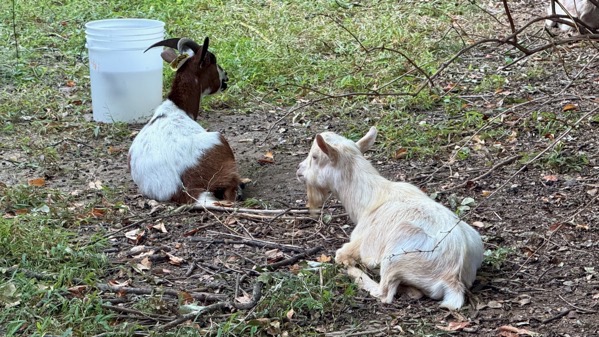
Morning cud chewing.
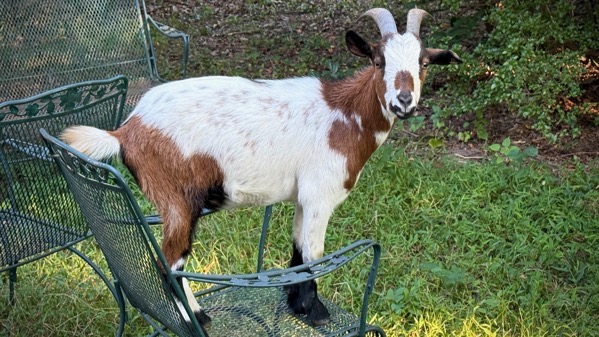
Afternoon relaxation (and cud chewing).
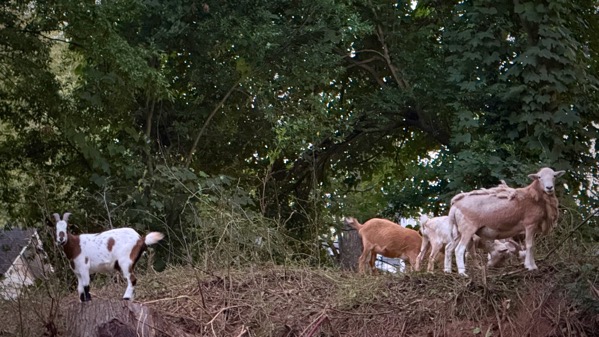
Evening snacking. [That’s Sheepie on the far right.]
Posted at 8:22 PM |
2 Comments »















